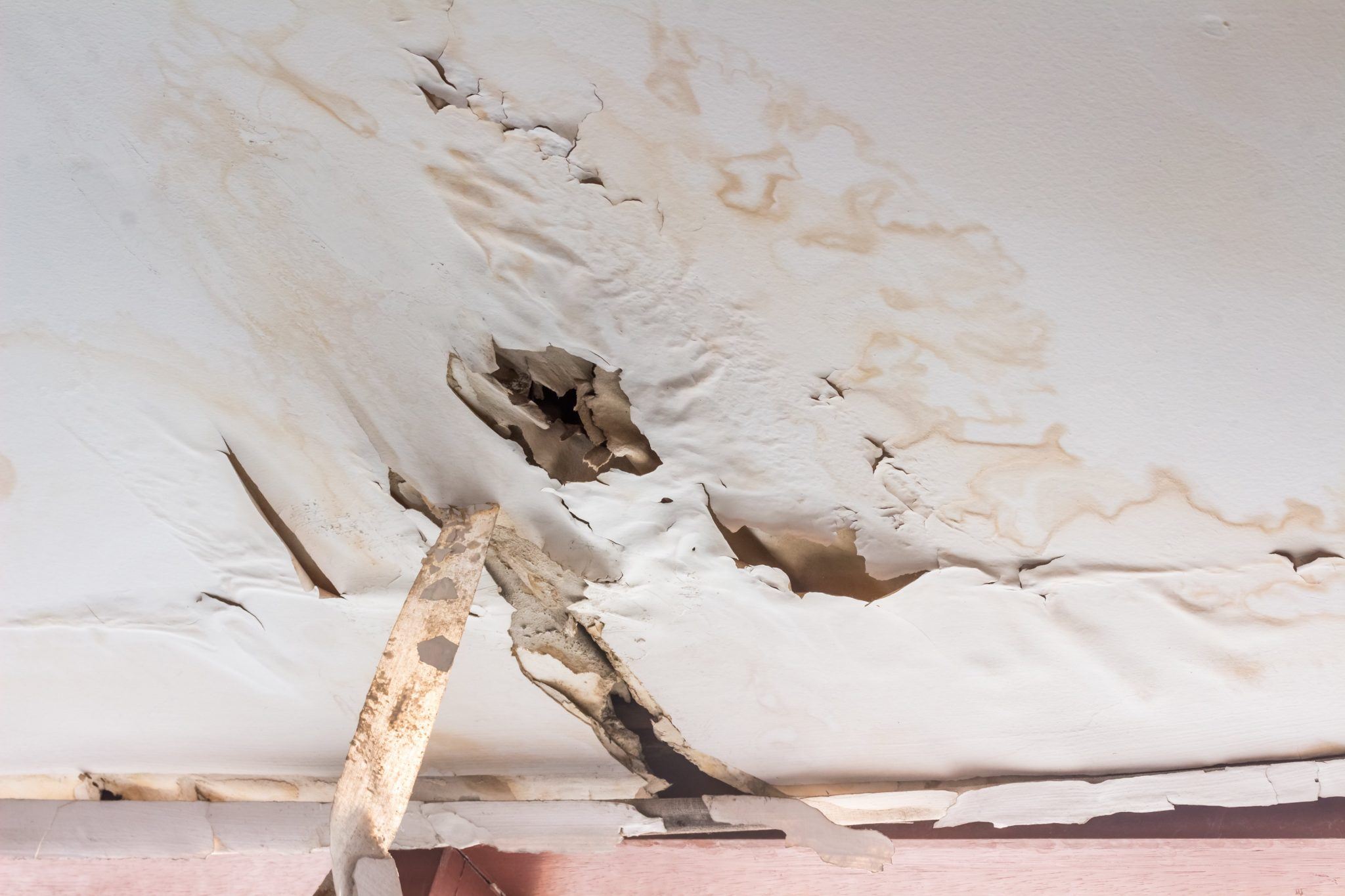7 Common Causes of Roof Leaks
It’s the sound you never want to hear: the persistent thump of water dripping onto your floor from a leak in the roof. Roof leaks can cause serious, expensive damage if the underlying cause isn’t repaired right away. A bucket and a frustrated sigh won’t protect your home from harmful water damage, so let’s take a moment to look at the most common culprits behind leaky roofs.

Why Is My Ceiling Dripping?
- Broken Roofing Shingles. Shingles are built to last for years, but sometimes they can’t hold up against the high winds and punishing hail we see in North Texas. A broken or missing shingle allows water to seep deeper into your roofing structure, where it eventually pools and drips through your ceiling. Be sure to check your shingles for damage following storms.
- Broken Flashing. Roofs are prone to leaks wherever seams come together. These areas are sealed and reinforced by roof flashing, which is a sheet of thin metal nailed onto areas with high water runoff. If the flashing is corroded or damaged, water will run past it and into your home. Have your flashing replaced when it shows signs of damage.
- Holes in the Roof. Holes in your roof aren’t always visible, and they aren’t always caused by storms. If you’ve had rooftop receivers or solar panels removed, there could be perforations in the roof that will eventually form a leak. Call an experienced roof inspector to make sure your roof is intact.
- Condensation and Runoff. Attics are a common location for excessive moisture buildup. Unfortunately, they are also one of the most overlooked areas of a house. Condensation can form in the attic where it goes unnoticed until the ceiling starts to drip. Likewise, water running from a higher level of your roof onto a lower layer can cause leaks to form. A good gutter system can minimize the damage.
- Clogged Gutters. It’s surprising how quickly leaves and other debris can get backed up in your gutters. When this occurs, it prevents the gutters from directing water away from your roof. The water pools on your shingles, where it can soak through and eventually cause an opening to form. Regular cleaning can prevent serious backups, but recurring problems might require a modification to your gutters.
- A Shallow Slope. If your roof’s slope is too shallow, the shingles can fly up when hit with high wind, allowing rain to get in around them. For especially shallow slopes, the shingles might require an extra layer of underlayment to keep things watertight. It is important to use a roofing company you trust to install the right materials correctly for your roof’s slope.
- The typical shingle roof is built to last anywhere from 15 to 30 years, depending on the types of shingles used. As we are already 19 years into this century, even homes built in the 1990’s will soon be needing new roofs. Over time, constant exposure to the sun, wind, rain, and debris cause weak points to form in the roof’s surface. Speak with a roofer about your insurance coverage and the cost to replace a roof that is past its age limit.

When to Call for Help
Call 1st Choice Home Inspections at the first sign of a leak. The longer you wait, the more water damage there will be! Save yourself further repairs and stress by letting us fix the problem before it becomes a bigger one. Our team is always available to answer your questions. Give us a call or request a quote online.
0 Comments